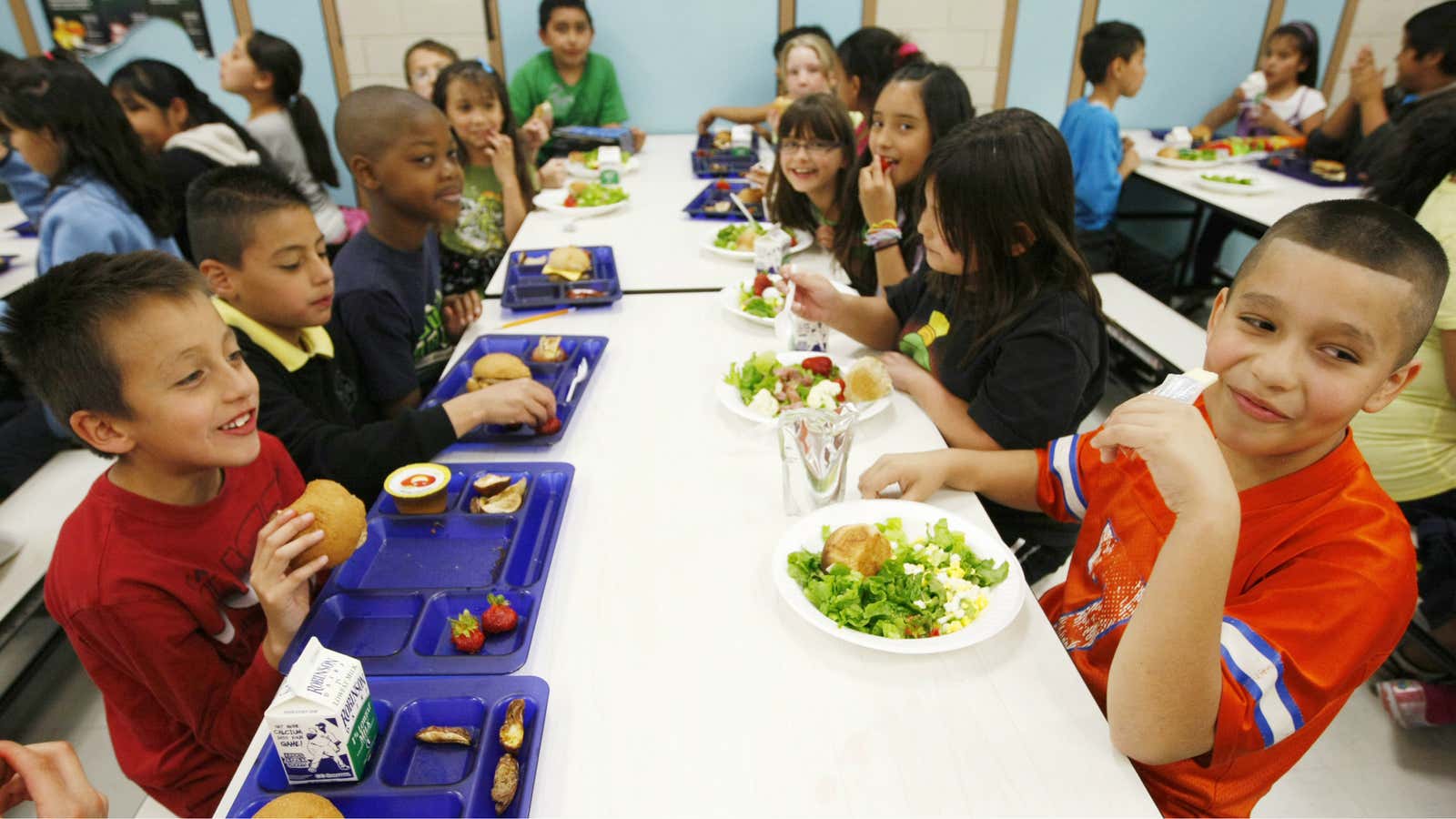Popular opinion would have it that French kids are superior to American ones in many ways. I don’t buy it.
But there’s no disputing the fact France has a dramatically lower obesity rate than the United States, which they seem to accomplish by feeding their children Boeuf bourguignon and brie with a snack of bread and chocolate at 4pm every day.
The stark differences in school lunches provide some answers: French kids are given time to eat hot, four-course meals that include a wide range of cheeses and artisanal breads while New York City public schools kids race through variations of starch with cheese with an “eat your colors” campaign to encourage fruit and vegetable consumption. If France faces restrictions on how much ketchup can be served weekly, the US government has at various times tried to pass ketchup off as a vegetable.

Here’s what French kids in Paris 17th arrondissement (link in French) ate this week, compared to kids in New York City:
The French take a different approach to food from a very young age, says Karen Le Billon, author of French Kids Eat Everything.
“The French believe—and have done scientific research—to prove you can teach your kids to eat just like you teach them to read,” she told Quartz. Pediatricians give new parents detailed lists of what kids should be trying. Young children are expected to try pickled pig snouts. “It’s soft, and healthy,” she said. Taste training is part of the national curriculum and kids get tested in year four; they learn that science shows you need to try a new food many times before you like it. By the time kids get to school, stinky cheese is not going to scare anyone.
Nutrition is not totally overlooked. When Le Billion was tracking it, over the course of a month only four main dishes and three desserts could be high fat (more than 15%). Fried food could only be served four times per month and schools limited ketchup to once per week, with some schools not serving it at all. Water is the drink on offer and kids are sometimes served vegetables first on the hunch that hungry kids will eat anything.
There’s another key difference: French kids actually have time to eat. The French Ministry of National Education requires that lunch be at least 30 minutes compared to US public schools where one mother/activist estimated kids had eight minutes per meal.
The US government has tried to improve its notoriously grim public school menus. The Healthy, Hunger-Free Kids Act, which took effect in 2012, requires that meals be lower in fat, calories and sodium, and fruits and vegetables have to actually appear on the menu. The project has not been a slam dunk: some say more kids are throwing away more food and bringing in their own lunches.
“Not surprisingly, American kids, whether pressed for time or just grossed out, leave much of their meals untouched; particularly neglected are the fruits and vegetables, which they are now forced to put on their trays before they can exit the cafeteria line,” wrote Kate Murphy in the New York Times. She noted that under the legislation’s guidelines, a typical French meal would fail but a re-formulated Philly cheese steak would pass.
Not all is lost. American children are eating 16% more vegetables and 23% more fruit at lunch, said Katie Wilson, deputy under secretary for food, nutrition and consumer services in the Agriculture Department in a letter to the New York Times.
Bigger changes may require a more wholesale shift in attitude. The French have a word for food and company: ”Commensality (la commensalité), which literally means ‘eating together in a group,” Le Billon writes. The American equivalent? Miller Time?
